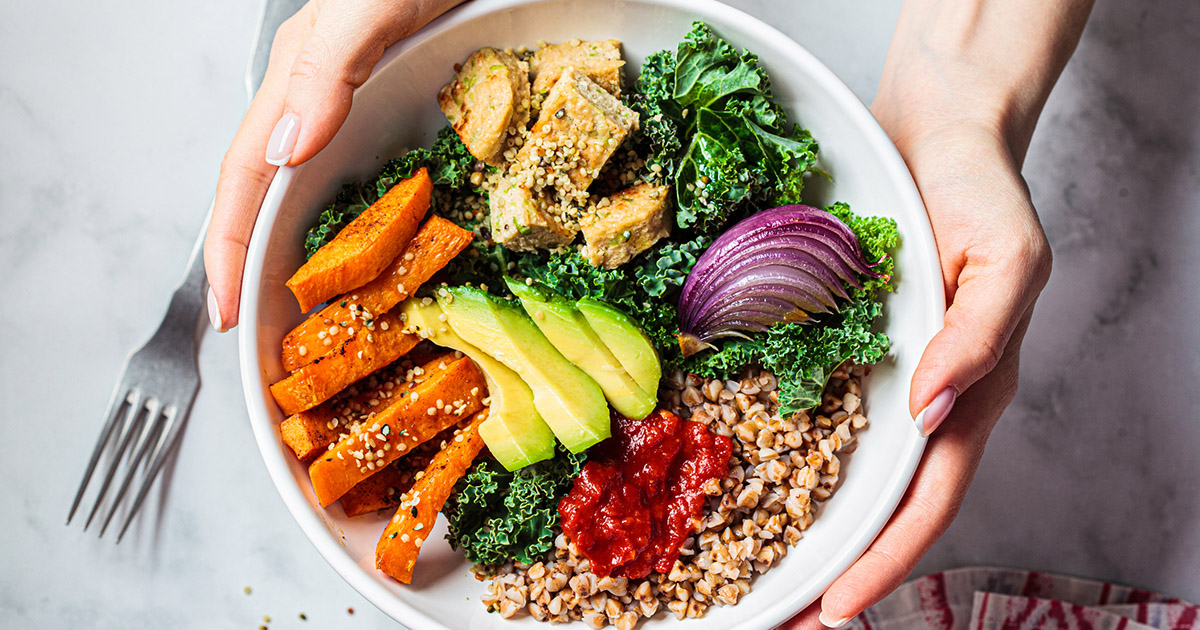A recent poll found that four out of ten women worldwide report experiencing chronic stress. Meanwhile, 24% of women report having health problems that keep them from performing normal activities that are typical for women their age. Unfortunately, far too many women either can’t or don’t take the time to address them.
Women often face unique barriers that prevent them from seeking medical help. The demands of work and child-rearing can cause many people to put off prioritizing their health as they prioritize the needs of others. If this describes you, know that you don’t need to overhaul your schedule or give up your leisure time to begin making a difference in your health. In fact, a few simple changes may be all you need to improve your well-being.
Simple Health Tips for Busy Women
These simple health life hacks can help get you on the road to better health until you can make more lasting changes.
Find Creative Ways To Work Out
Increasing the time you spend elevating your heart rate doesn’t need to mean scheduling more time at the gym.
There are plenty of creative ways to fit a little blood-pumping workout into a busy day.
- Find a Faraway Spot – When you’re parking at work or running errands, choose a spot towards the back of the lot or far away from the building entrance. This can greatly increase the distance you walk during the day.
- Get Stepping – Consider climbing stairs instead of taking the elevator. Or, during lunch breaks, find a nearby space to put in 30 minutes of walking.
- Multitask with Healthy Habits – If you enjoy long phone calls with friends and family on the weekends, put on Bluetooth earbuds and take those chats outside. You can have conversations with friends while you walk about the block or visit a nearby park.
As little as 30 minutes per day of light exercise can significantly improve heart health and overall fitness. You can also find countless short workouts online, so take your pick and find ways to integrate those activities into your normal routine.
Stock Healthy Foods in Your Kitchen
 One of the most popular and effective life hacks for busy women involves stocking your kitchen with healthy foods. If you’re like most of us, you already shop for groceries, so simply replacing foods high in sugar with healthier options won’t add to your schedule. Anything packed with preservatives or artificial flavors or colors should similarly be cut from your kitchen.
One of the most popular and effective life hacks for busy women involves stocking your kitchen with healthy foods. If you’re like most of us, you already shop for groceries, so simply replacing foods high in sugar with healthier options won’t add to your schedule. Anything packed with preservatives or artificial flavors or colors should similarly be cut from your kitchen.
The old adage of “out of sight, out of mind” applies here. When unhealthy foods are out of sight, you’ll be pleasantly surprised that they remain out of your mind, helping you eat healthier without devoting a lot of excess time and energy. By reducing sugary and starchy food items, you can prevent spikes in blood sugar. Opt for products that include whole grains, fresh fruit, fresh vegetables, and lean protein.
One added benefit of this approach is balancing your energy level. When your blood sugar levels do not spike and drop throughout the day, you can enjoy the benefits of balanced energy. Imagine no more mid-day crashes.
Change Up Your Lunch Time
Takeout and processed freezer meals can wreak havoc on your wallet and your health. Consider packing lunch and focusing on a variety of plants and fewer breads and sugars. A balance of carbs, proteins, and healthy fats is essential for your health.
Changing up your lunch can be even simpler than changing the foods you eat. By starting lunch one hour early or later, you can avoid the stress of lunch crowds and you’ll be better able to focus on your food. Remaining focused on the tastes, smells, and other sensations as you eat- a process called mindful eating – can help you recognize when you’re full and reduce the calories you take in.
Be Mindful of How You Snack
Even if you’ve successfully switched up how you’re eating at lunch, there’s still that mid-afternoon lull that can lead to unwise snacking and undo all the healthy things you ate at lunch. Don’t stress; we all get hungry throughout the day, and if it’s unaddressed, hunger can lead to headaches, fatigue, and irritability. Eating healthy snacks can help you maintain your energy levels and prevent overeating at mealtimes.
Opt for nuts, seeds, vegetables, and anything high in protein and fiber. Fiber allows nutrients to reach farther into your digestive system, which can help nourish important gut bacteria that aid in digestion. Look for whole foods that do not have additives and preservatives.
Easy Tips for Proper Nutrition
If you need more of a nutrition overhaul, forget the latest fad diets. Depriving your body of a particular food group can be a recipe for disaster because you need a wide range of nutrients to function properly. It can also affect the gut.
If your gut isn’t healthy, nutrient absorption suffers, which can impact your overall health. Nutrients also reduce the risk of many diseases. Women, in particular, should be mindful of calcium and vitamin D intake, which can improve the density of your bones and reduce the risk of bone injuries, especially as you age. Proper nutrient intake can even help you look younger or begin to slow the signs of aging.
Keep these useful tips in mind.
- Incorporate leafy greens. Foods like kale, spinach, beet tops, and avocados are rich in fiber and nutrients, including magnesium, which balances calcium levels and prevents cramps.
- Reduce salt and increase potassium. Lower your sodium intake and eat potassium-rich foods such as avocados, tomatoes, and bananas to promote heart health and proper circulation.
- Nurture gut bacteria. Beneficial gut bacteria aid in nutrient absorption. Include probiotic foods like yogurt, sauerkraut, and pickles in your diet, along with plenty of fiber.
- Eat a rainbow. A varied diet with colorful fruits and vegetables ensures a broad range of nutrients, supporting overall health.
- Stay hydrated. Drink six to eight glasses of water daily to maintain steady energy levels and aid digestion. Herbal teas without additives can also help with hydration.
- Choose whole foods. Avoid processed foods and prepare wholesome meals. Opt for healthy snacks like nuts, seeds, and fruits instead of junk food.
Start and End Each Day With Water

Water is essential for life. By contrast, dehydration can lead to health problems and potential organ damage. Starting your day with a glass of water is an easy way to set the tone for the rest of your day and ensure your kidneys and other organs are functioning well. This, in turn, can aid your body’s natural detoxification processes.
Drinking a glass of water at night helps your body function properly while you sleep. You may find that your sleep is deeper and more revitalizing. If you suffer from fatigue, headaches, and mental fatigue – all signs of dehydration – staying hydrated can be an important first step to better sleep.
If you don’t find water appealing on its own, you can add mint, lemon, frozen berries, or other natural ingredients to enhance the flavor. Herbal teas (as long as they aren’t high in caffeine) can also be a great source of hydration.
Wake Up Earlier
We can’t all be morning people, but waking up even just 30 minutes earlier can give you time for exercise, meal prepping, meditation, and other wellness activities. If you wake up without enough time to start your day, you may be creating a hectic pattern that stresses your body and leads to health problems.
Find Breaks Throughout Your Day
Whether you literally stop to smell the roses or simply pause to notice your breath, taking periodic breaks throughout your day can help your mind and body reset. This can reduce blood pressure, heart rate, and stress levels.
Of course, a break doesn’t always mean stopping or slowing your body and mind; it simply means intently breaking out of your set patterns. If your job requires you to sit for long periods of time, consider taking short breaks to walk, get a drink of water, stretch, or do another preferred activity. These small breaks in your routine can benefit your physical and mental health.
Stop Trying To Solve Your Problems by Multi-Tasking
Except for making an effort to stay active when you’re performing sedentary activities like talking on the phone, multitasking is not one of our recommended health life hacks. The brain simply focuses best on one thing at a time, so most efforts at multi-tasking are really examples of sacrificing one task at the cost of another. Multi-tasking may seem like one solution to address your busy schedule, but it can lead to decreased productivity and stress. Instead, focus on one task at a time and be mindful and present in the moment.
Get Outside
Most of us could use more time outdoors. Exposure to safe levels of sunlight can boost vitamin D, which can help with important body functions like sleep. Try to start your day by spending time outdoors. It can awaken your mind and body in a natural and healthy manner.
Monitor Your Hormones

Hormone fluctuation is natural, especially for women, but a medical professional can help you understand the difference between a normal and abnormal change in hormones. For example, menopause affects your hormones in a way that is expected, but a cortisol or adrenaline disorder can disrupt your hormones and cause other concerns. Tracking your menstrual cycle is a solid way to start because you can begin to monitor changes in symptoms and mood.
Prioritize Sleep
The importance of sleep cannot be overstated. Sleep helps your body regulate hormones, recharge, heal, and reduce the risk of mood disorders, among many other important benefits. Better sleep can also make you more productive during the day. To achieve these benefits, the average adult should seek seven to nine hours of sleep per night.
While true sleep disorders require medical help or even medication, everyone can benefit from a regular sleep routine. Try to go to sleep around the same time every night and eliminate screen time a few hours before bed. Reduce caffeine or alcohol consumption well before bedtime because those substances can interfere with sleep patterns – consider replacing them with herbal tea.
Some people find that “white noise” helps with sleep; this could be something as simple as a fan or as sophisticated as a white noise app or white noise machine. Keeping your home cool at night and investing in a quality bed, blanket, and pillows can also boost your chances of achieving great sleep. In general, try to end your days reading or doing something relaxing that can help you de-stress and stay content before sleep.
Reduce the Time You Spend on Social Media
Some social media time probably won’t hurt you, but far too many Americans of all ages spend hours per day engaging with people via their phones rather than in real life. Time on social media is time away from your loved ones, as well as time you aren’t exercising your body or cultivating your mind. Social media can also contribute to stress.
Try setting boundaries for your screen time by allotting set windows of time for scrolling online. You can use the time you free up to engage in resting, cooking, or exercising. Time spent interacting with people in person is always more rewarding and meaningful than viewing posts that are designed to be addictive.
An easy way to start is to turn off social media app notifications. Software engineers are well aware that social media delivers dopamine rewards that can be very addictive and hard to ignore, and seeing that notification alert can be the trigger that keeps you engaged in social media rather than with friends and family. Turning off those notifications removes the temptation for you so you can stick to your boundaries.
Final Thoughts
Health life hacks offer strategies and tricks for improving your health and reducing your risk factors for certain conditions and diseases. However, hacks are no replacement for regular medical examinations by a trusted physician. Regular doctor visits are essential for early disease detection and overall health.
Key screening tests that may be recommended by your physician include blood pressure checks every two years if normal or yearly if elevated. Bone density should also be tested as recommended, typically once after age 65 or earlier if symptoms arise. Women aged 50-75 should also get mammograms every two years for breast cancer detection.
Your doctor can be a valuable resource for reminding you when you’ll need to undergo examinations and screenings. Each patient is unique and comes with their own medical history, family medical history, risk factors, and other unique factors that a medical professional can consider. So, after you’ve implemented your favorite health hacks, continue to monitor your health and seek advice from your favorite physician.
Contact Arizona Gynecology Consultants Today

Not feeling your best these days despite doing what you can to boost your wellness? Sometimes, it’s more than just being a little stressed or tired, and Arizona Gynecology Consultants can help. We strive to treat each patient as a whole person since women’s needs evolve throughout their lifetime. If something more serious is afoot, we can utilize the latest non-invasive techniques to ensure the care we provide comes with minimal disruptions to your life and wellness.
Our team of knowledgeable doctors, surgeons, and clinical specialists have decades of knowledge in women’s health. Whether you need practical advice on the latest “hacks” for staying healthy or more comprehensive medical help, we’re here to provide you with the treatments and advice you need.
Contact us today to schedule an appointment.
Sources:
- Inc, G. (2024, January 16). Global Study Issues Wake-Up Call for Women’s Health. Gallup.com. https://news.gallup.com/poll/547712/global-study-issues-wake-call-women-health.aspx
- Just 30 minutes of light exercise each day can benefit health. (2018, January 29). Www.medicalnewstoday.com. https://www.medicalnewstoday.com/articles/320760#:~:text=Replacing%20sedentary%20time%20with%20just

Founder and Medical Director of ARIZONA GYNECOLOGY CONSULTANTS
Dr. Kelly Roy is a specialist in surgical gynecology and advanced laparoscopy (and hysteroscopy). She is a long-time resident of Arizona and obtained her Bachelor of Science degree in Biomedical Engineering at Arizona State University before finishing her Doctorate of Medicine at the University of Arizona in 1997.
Dr. Roy completed her residency in Obstetrics and Gynecology at the then “Banner Good Samaritan Hospital” (now Banner University Medical Center), in Phoenix Arizona in 2001.
Well known for her teaching and surgical ability, she is on the faculty at the residency program at both Banner University Medical Center and Saint Joseph’s Hospital in central Phoenix and is a Clinical Assistant Professor of Medicine at the University of Arizona College of Medicine, Phoenix Campus. Dr. Roy has taught advanced surgical techniques to medical students, residents, fellows and colleagues for over 15 years.
Dr. Roy is also a consultant to the medical device industry and has participated in the design and clinical testing of many instruments and surgical devices available on the world-wide market today.
Read More About Dr. Kelly Roy, MD | WebMD Profile | Health.USNews.com Profile | Current Obstetrics and Gynecology Reports: TFA with the Sonata System







